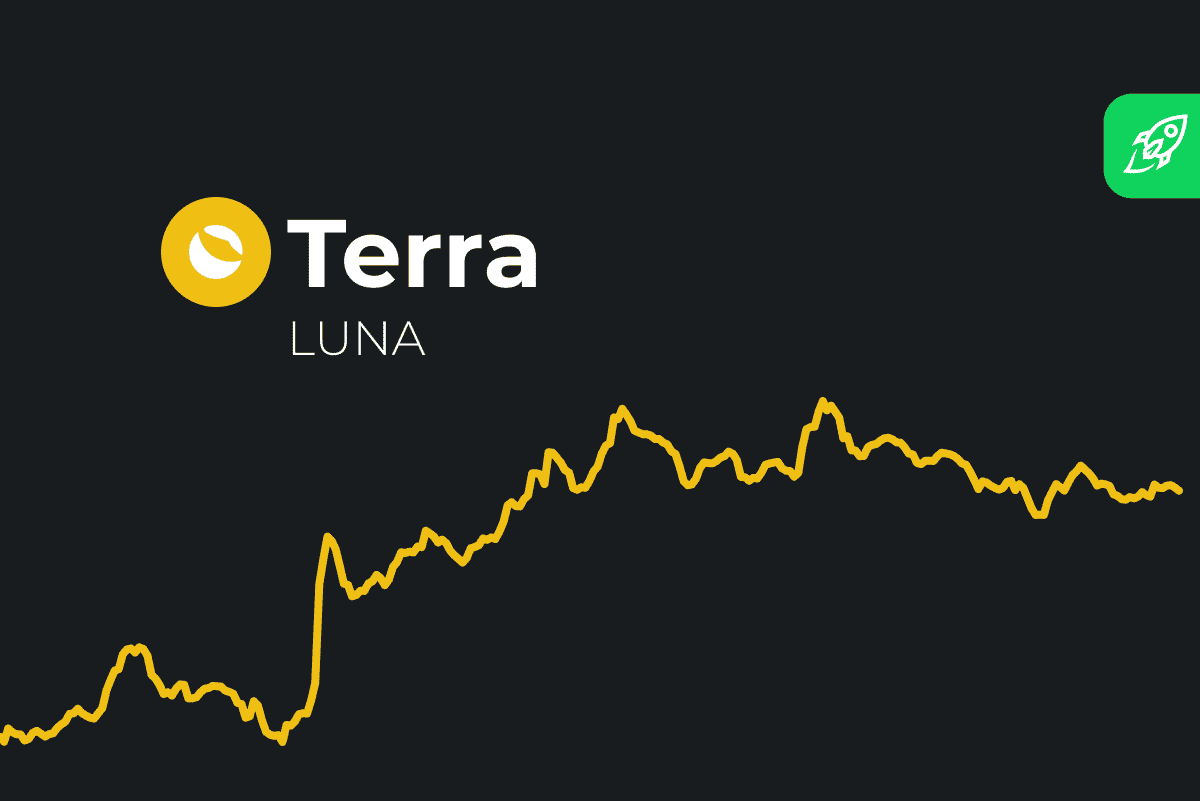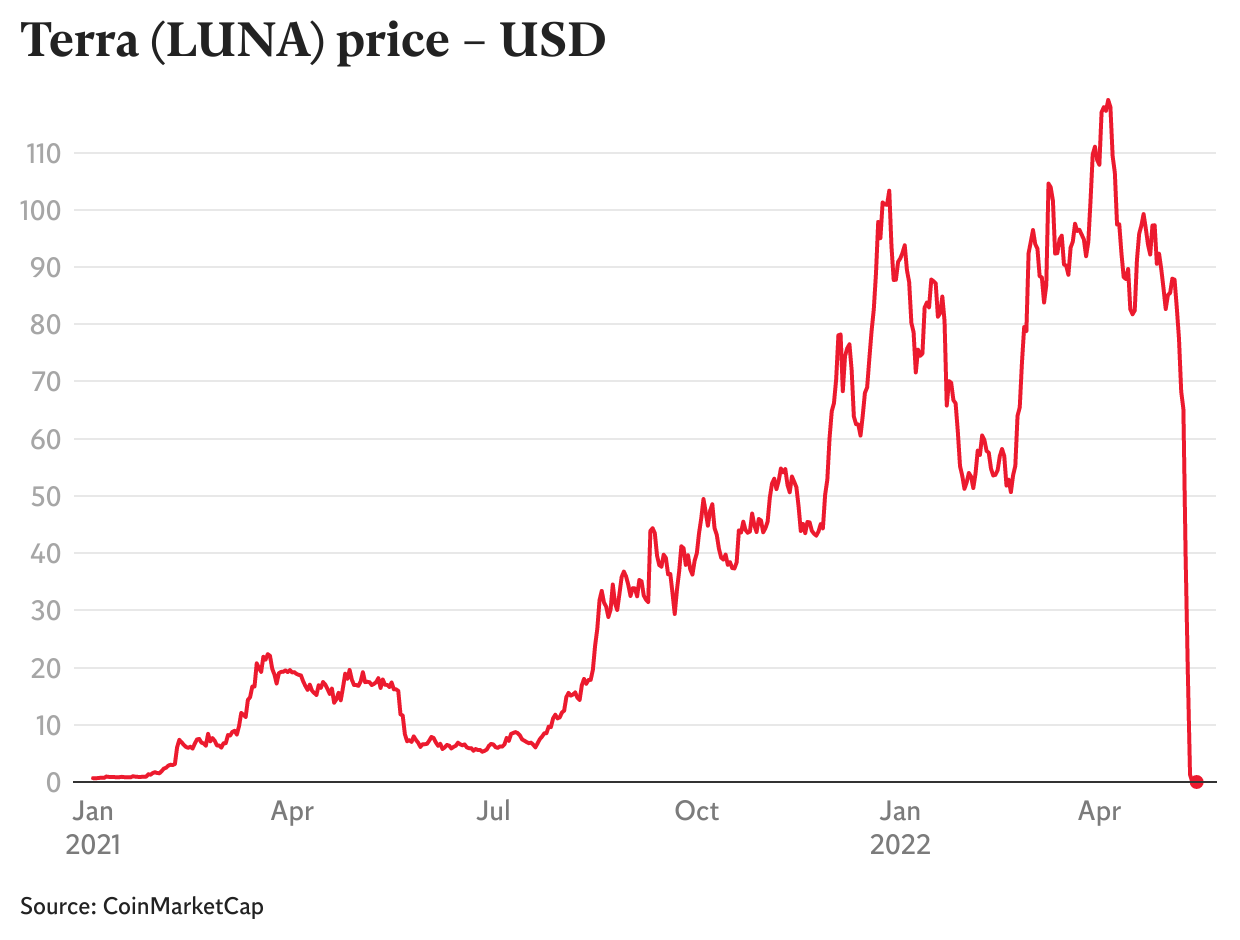Historical Price Trends
Terra luna cryptocurrency price - Terra Luna has witnessed a tumultuous price journey since its inception. Its value has fluctuated significantly, influenced by a multitude of factors. This overview will delve into the historical price trends of Terra Luna, exploring key events and drivers that have shaped its trajectory.
The following graph illustrates the price changes of Terra Luna over time:
[Insert graph here]
Key Events and Influencing Factors
The price of Terra Luna has been influenced by a combination of internal and external factors. Some of the most notable events and drivers include:
- Launch and Initial Price Surge: Terra Luna was launched in 2019 and experienced a rapid price increase in its early days due to strong investor interest and speculation.
- UST Peg and Anchor Protocol: The launch of UST, a stablecoin pegged to the US dollar, and the Anchor Protocol, which offered high interest rates on UST deposits, boosted demand for Terra Luna and contributed to its price appreciation.
- Market Volatility and Cryptocurrency Crashes: Terra Luna, like other cryptocurrencies, has been subject to market volatility and has experienced price drops during broader cryptocurrency market downturns.
- Depeg and Collapse: In May 2022, UST lost its peg to the US dollar, triggering a collapse in the value of both UST and Terra Luna. This event significantly impacted the cryptocurrency market and raised concerns about the stability of algorithmic stablecoins.
Market Factors Influencing Price
Terra Luna's price is primarily driven by the interplay of supply and demand, market sentiment, and various regulatory and economic factors.
Supply and Demand
The availability of Terra Luna in the market, combined with the demand for the cryptocurrency, plays a significant role in determining its price. An increase in demand relative to supply tends to push the price upward, while an excess of supply can lead to price declines.
Market Sentiment and Investor Confidence
Market sentiment and investor confidence significantly influence Terra Luna's price. Positive news, developments, or announcements can boost investor confidence, leading to increased demand and higher prices. Conversely, negative sentiment or uncertainty can trigger sell-offs and price drops.
Finish your research with information from calo crypto.
Regulatory and Economic Factors
Regulatory changes, such as new laws or policies affecting cryptocurrencies, can impact Terra Luna's price. Economic factors, including interest rates, inflation, and overall market conditions, can also influence investor sentiment and, consequently, the price of Terra Luna.
Technical Analysis

Technical analysis is a method of evaluating a security's price movements based on historical data and chart patterns. It helps traders identify potential trading opportunities and make informed decisions about buying or selling.
Further details about dia crypto is accessible to provide you additional insights.
Terra Luna's price chart exhibits several key technical indicators that can be used to predict future price movements. These include support and resistance levels, moving averages, and oscillators.
Support and Resistance Levels
Support and resistance levels are horizontal lines on a price chart that indicate areas where the price has consistently bounced off. Support levels represent areas where the price has found buyers, while resistance levels represent areas where the price has faced sellers.
Terra Luna has several key support and resistance levels that have been identified over time. These levels can be used to identify potential trading opportunities, as the price is likely to bounce off these levels.
Moving Averages, Terra luna cryptocurrency price
Moving averages are a technical indicator that smooths out price data by calculating the average price over a specified period of time. Moving averages can be used to identify trends and potential trading opportunities.
Terra Luna's price chart exhibits several moving averages, including the 50-day moving average, the 100-day moving average, and the 200-day moving average. These moving averages can be used to identify potential trading opportunities, as the price is likely to follow the trend of the moving averages.
Obtain recommendations related to rollercoin twitter that can assist you today.
Oscillators
Oscillators are a technical indicator that measures the momentum of a security's price. Oscillators can be used to identify overbought and oversold conditions, which can indicate potential trading opportunities.
Terra Luna's price chart exhibits several oscillators, including the Relative Strength Index (RSI) and the Stochastic Oscillator. These oscillators can be used to identify potential trading opportunities, as the price is likely to reverse course when the oscillators reach extreme levels.
Comparison to Other Cryptocurrencies

Terra Luna's price performance can be compared to other similar cryptocurrencies in the market. Factors such as market capitalization, trading volume, and utility can influence its relative strength or weakness.
Market Capitalization
Market capitalization refers to the total value of all outstanding coins in circulation. Cryptocurrencies with higher market caps tend to be more stable and less volatile. As of March 2023, Terra Luna has a market cap of approximately $1.2 billion, ranking it among the top 100 cryptocurrencies.
Trading Volume
Trading volume indicates the number of coins being bought and sold over a specific period. High trading volumes suggest strong market interest and liquidity. Terra Luna's trading volume has been relatively high, indicating active trading and liquidity in the market.
Utility
The utility of a cryptocurrency refers to its practical applications and use cases. Terra Luna's primary utility is as a payment token within the Terra ecosystem, which includes decentralized finance (DeFi) applications and stablecoins. Its utility as a payment token and its integration with other DeFi services contribute to its value and demand.
Comparison Chart
| Cryptocurrency | Market Cap (USD) | Trading Volume (24h) |
|---|---|---|
| Terra Luna | $1.2 billion | $100 million |
| Ethereum | $150 billion | $1 billion |
| Binance Coin | $45 billion | $500 million |
Future Price Predictions: Terra Luna Cryptocurrency Price

Terra Luna's future price trajectory remains uncertain, influenced by a myriad of factors. However, by analyzing historical trends, market conditions, and technical indicators, we can speculate on potential price scenarios.
The cryptocurrency market is highly volatile, and any predictions should be taken with caution. Nevertheless, understanding the potential factors that could shape Terra Luna's price in the future can help investors make informed decisions.
Adoption and Use Cases
The adoption and expansion of Terra Luna's ecosystem, including its use cases for payments, DeFi applications, and stablecoins, will significantly impact its price. Wider adoption could increase demand and drive up the value of LUNA.
Market Conditions
Macroeconomic conditions, such as interest rates, inflation, and geopolitical events, can influence the overall cryptocurrency market and, by extension, Terra Luna's price. Favorable market conditions tend to boost crypto prices, while adverse conditions can lead to downturns.
Technical Analysis
Technical analysis of Terra Luna's price charts can provide insights into potential price movements. By studying historical patterns, support and resistance levels, and momentum indicators, traders can identify potential buy and sell signals.
Possible Price Scenarios
Based on these factors, here are some possible price scenarios for Terra Luna:
- Bullish Scenario: If Terra Luna's adoption and use cases expand rapidly, and market conditions remain favorable, the price could surge significantly, potentially reaching new all-time highs.
- Bearish Scenario: Conversely, if adoption stalls, market conditions worsen, or technical analysis suggests a downward trend, the price could decline substantially, potentially falling below previous support levels.
- Stable Scenario: Terra Luna's price may remain relatively stable if adoption and market conditions fluctuate moderately. In this scenario, the price could move within a defined range, with occasional breakouts or pullbacks.
